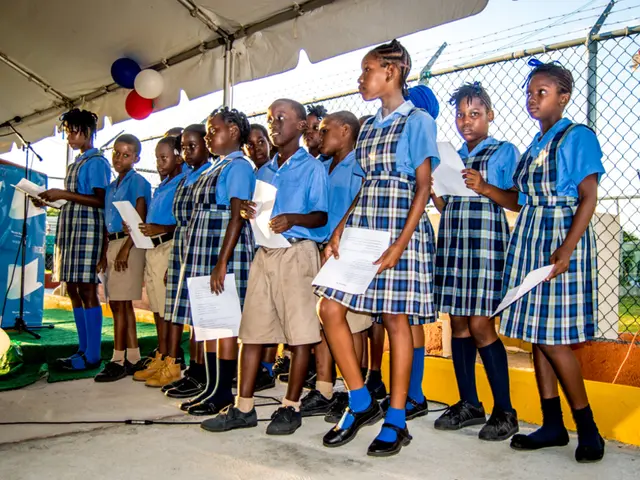Potential Changes and Strengthening Efforts in the Face of Tariff Consequences
Vietnam continues to attract foreign investment, with FDI inflows reaching over $24 billion in the first seven months of the year. This growth is despite concerns over new tariffs and the intense regional competition.
According to Bloomberg Intelligence analyst Steven Tseng, Vietnam is still in a relatively favourable position. The new levy for Vietnam is 1% point higher than some other ASEAN countries and lower than the average levies on Chinese goods. This suggests that Vietnam remains an attractive destination for foreign investors.
Developing industrial property is a key focus for Vietnam to remain a standout destination for medium and long-term FDI. Premium industrial properties in Vietnam, like the Core5 portfolio, are LEED certified for sustainability and energy efficiency. This commitment to advancing infrastructure investment, including airports, roads, and energy, is supporting the development of industrial assets.
To navigate against intense regional competition, additional policies for land planning per newly established regions and incentives for manufacturers and industrial developers at the localities level are being considered. This shows the government's commitment to fostering an environment conducive to foreign investment.
However, the new US tariffs may still pose various challenges for Vietnamese exporters and economic growth. In response, Vietnamese businesses are adapting by investing in local supply chains, exploring new export markets, and innovating to maintain competitiveness in a challenging global landscape.
To remain resilient and agile in attracting foreign investments, guidance for companies to diversify their export markets should be issued. The government will also have to press forward negotiations on transshipments to clarify definitions and categories.
Moreover, mechanisms for updates and alignment with the labour market's demand are being framed with clear policies. Vietnam is focusing on fostering innovation, enhancing language skills, ensuring digital literacy, and vocational training in public education, strategically planned per region. This focus on human capital development is essential for enhancing investments and growth.
In the last seven years, developers in Vietnam have rolled out premium, internationally premium industrial products, transforming Vietnam's offerings to foreign and local companies. However, additional policies and directives to establish clear mechanisms to control the origin of goods need to be urgently rolled out.
Despite these challenges, investors remain bullish on Vietnam. The country is proving adaptable through volatility, and its ability to navigate challenges and thrive is a testament to its resilience. Infrastructure projects like the Ho Xa Northwestern Industrial Park, which has received investments of over 1.25 trillion VND, are evidence of this.
In conclusion, Vietnam remains a favourable destination for foreign investment. With its commitment to infrastructure development, human capital development, and policies to attract and retain foreign investment, the country is well-positioned to weather the challenges of the global economy and continue to grow.
Read also:
- Catastrophe at a U.S. Steel facility in Pennsylvania results in the loss of two lives. crucial details unveiled
- Manipulating Sympathy: Exploiting Victimhood for Personal Gain
- Auto Industry Updates: Geotab, C2A, Deloitte, NOVOSENSE, Soracom, and Panasonic in Focus
- Exploring Money-Making Opportunities in Digital Gaming Worlds








